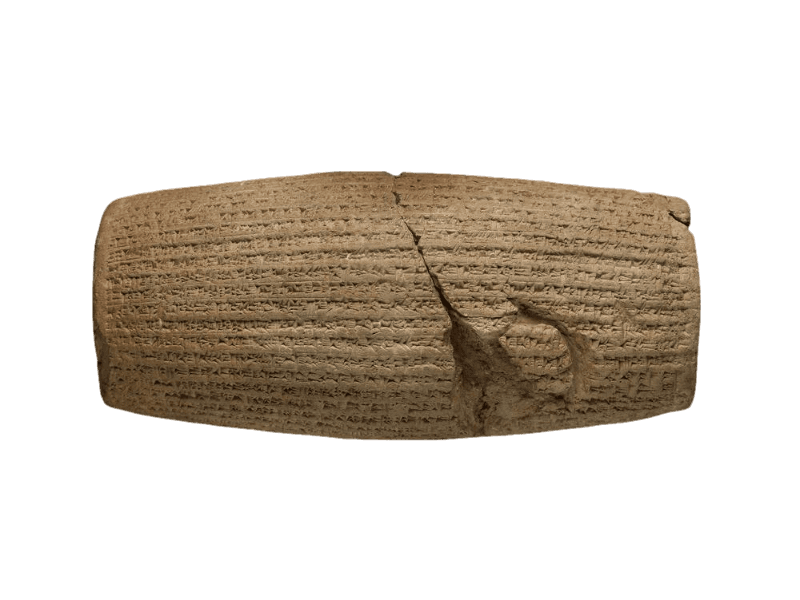The Cyrus Cylinder
The very first declaration of human rights

In March 1879, the esteemed archaeologist Hormuzd Rassam conducted a groundbreaking excavation at the foundations of the Esagila, the revered Marduk temple of Babylon, situated in present-day Iraq. Among the remarkable discoveries of this excavation was the esteemed Cyrus Cylinder, an artifact measuring 22.5 centimeters (8.9 inches) in length and 10 centimeters (3.9 inches) in width, inscribed with the ancient Akkadian script.
The Cylinder bears witness to the historic conquest of Babylon by the illustrious Cyrus the Great in the year 539 BCE. Notably, the inscription on this artifact exalts Cyrus, expounds upon his esteemed genealogy, and reverently depicts him as a monarch of a regal lineage.
Moreover, the Cylinder emphatically emphasizes the rights and freedoms accorded to the people. It vividly recounts Cyrus the Great’s peaceful entry into Babylon, where he graciously liberated the slaves of his predecessors and bestowed the freedom to worship any deity of their choosing upon the populace.
Among the most renowned acts of compassion demonstrated by Cyrus the Great was the liberation of captive Jews, enabling them to return to their homeland. Such a benevolent gesture earned him the title “Cyrus the Messiah” in the Hebrew Bible.
Presently, the eminent Cyrus Cylinder is safely housed within the esteemed collection of the British Museum, serving as an invaluable relic of antiquity and an enduring testament to the remarkable reign and magnanimity of Cyrus the Great.
